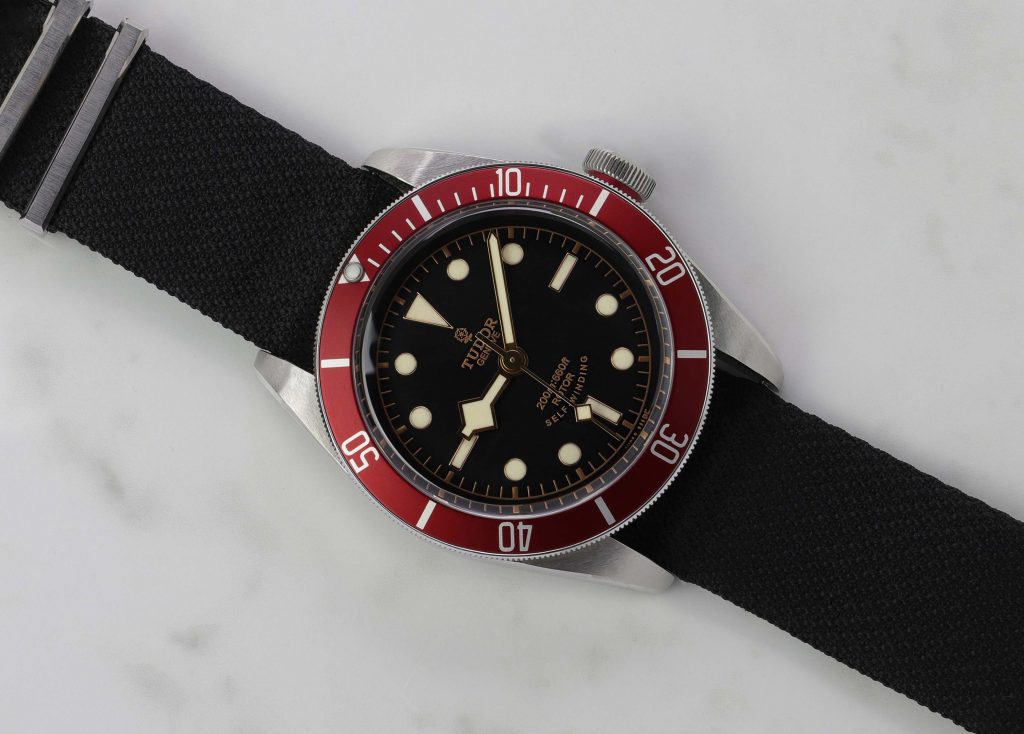
Which Size Should Your NATO Strap Be? [Guide]
Choosing the right NATO strap for your watch might be harder than you think. Not only do you have to consider the perfect color configuration for your watch, but you also have to have in mind the thickness of the strap, the length of the strap, and also the width of the strap. In this article and guide, we’ll cover everything you need to know to choose the right NATO strap for your watch.
Background & Purpose
A NATO strap is often a popular choice to use as a strap for any type of watch, but perhaps most commonly used on divers, chronographs, GMTs and any other type of sports watch. The NATO straps were originally used by the military, which was in need of a durable strap that was easy to fit on the wrist, but also over the jacket or any type of swimsuit easily.
This resulted in a fabric (or any other type of material) strap that had several holes to adjust the length of the strap easily. This was extremely convenient and served its’ purpose well, but is also easily adaptable to an everyday lifestyle outside the military, as the wrist, especially during summer, can expand quite much, and a watch with a steel bracelet without any type of quick adjustment can become too tight in changing climates.
Thickness & Width
Choosing the right width and thickness when purchasing a NATO strap for your watch is crucial.
The width of the strap should be the same as the width of the inner lugs.
The most common width for the inner lugs of watches is 18-22mm, with 20mm often being the sweet spot for watches that has a diameter of 38-42mm. The reason why you want the strap to be the same width as the lugs are simply because of the symmetry, as a perfect fit often is a more delighted view for the eye.
However, choosing a strap that has a smaller width than the inner lugs, is, of course, something that does not affect the purpose of the strap, and it will of course function the same way as a perfectly fitted NATO strap. The same goes for a NATO strap with a larger width, although it might be harder to fit the strap onto the watch. Choosing a larger NATO strap might however tarnish the watch case easier, as it constantly will press against the inner lugs, and over time cause wear. This is something that often develops after a long time but is worth knowing.
However, one major factor when considering purchasing a NATO strap is its thickness. Depending on how the watch is designed and constructed, the lugholes might be too close to the case, which will make it only possible for a thinner NATO strap to fit through the tiny gap. The idea behind a NATO strap is to have the strap easily interchangeable, which means that it should be possible to remove the strap from the watch without any hassle once it is on.
What might happen when the thickness of the strap is too thick, is that the strap will have to be squeezed between the gap. Not only does this cause wear much faster on your watch, but it can also become quite hard to remove the strap from the watch, without removing the spring bars, which go against the simple purpose a NATO strap has whilst being on the watch. Usually, this is not an issue, but some watches, which are constructed to have a special steel bracelet or a thin leather strap, might have this problem.

Length Of The NATO Strap
The length of the NATO strap can often be shortened or extended, with the same technique you can shorten or extend the handles of a backpack. However, despite this, the strap might be too long for you, meaning that when the NATO strap is strapped on the wrist, you would have a long piece of the strap as a leftover. This is all a matter of taste, but there are usually two techniques that frequently are being used.
- Fold The Strap
A commonly used way of handling this “issue”, is to fold the strap. Any NATO strap would have keepers, which are made to put the rest of the strap into but should the strap be longer, it is possible to fold the strap and put it through the keeper once more.
2. Cut The Strap
Another common solution to this “issue”, is to cut the strap yourself, in order not to be having to double fold the strap in the keeper.
A tip to make a good cut, which looks a bit rough and gives the watch a more tool-looking impression, is to place a coin where you want to cut the strap, and then cut it along the side of the coin. Once that has been done, the seams of the fabric will start to dissolve, in order to prevent this, it is common to take a lighter and use fire at the end of the strap where the cut has been made, just long enough so that he seams not will dissolve.

Leather NATO Straps
Apart from the classical NATO straps which are made from any sort of fabric, there is a new version of the NATO strap which is made of leather. Oftentimes a problem with leather straps is that to make them durable enough, they need to be quite thick. As mentioned above, the thickness of the NATO strap might affect how it fits and wears on your wrist, and the thickness is often a problem with leather NATO straps, even though it to some, might make the perfect look.
Question!
What are your thoughts on NATO straps? Do you find it useful and practical?





